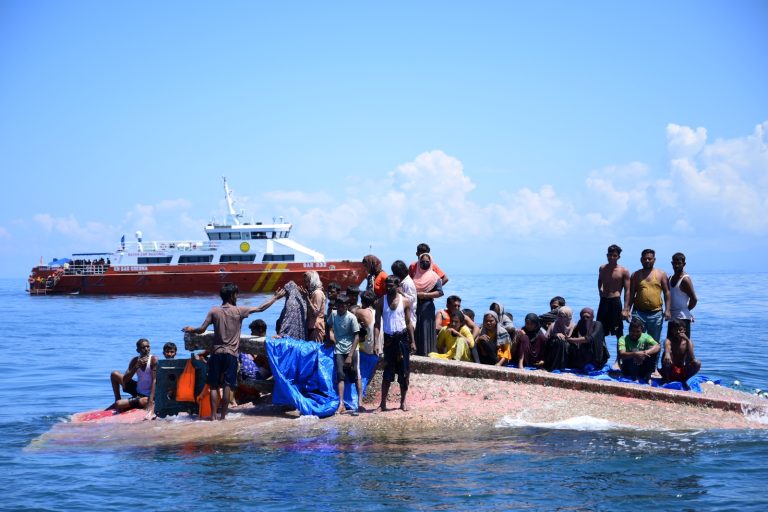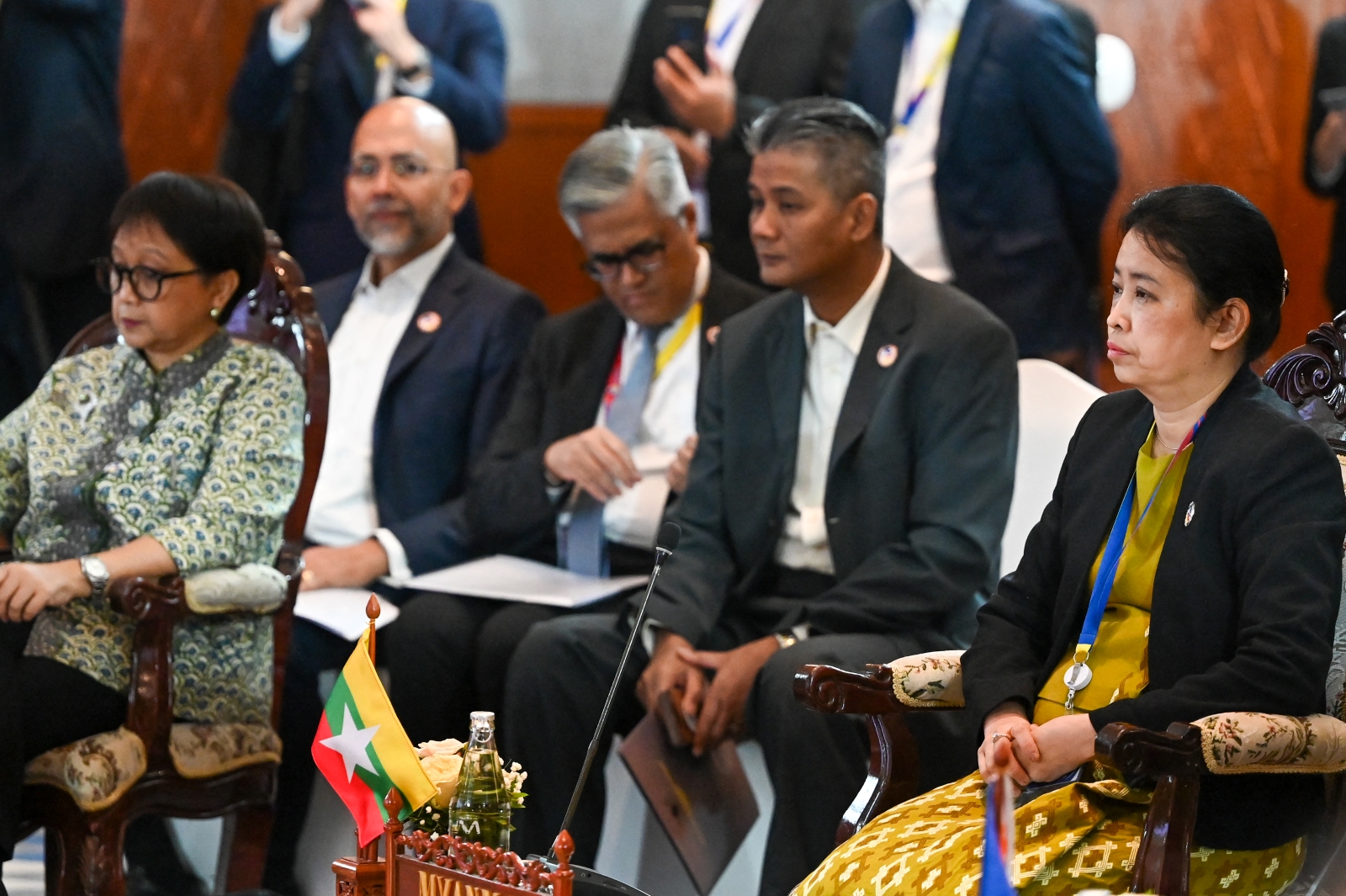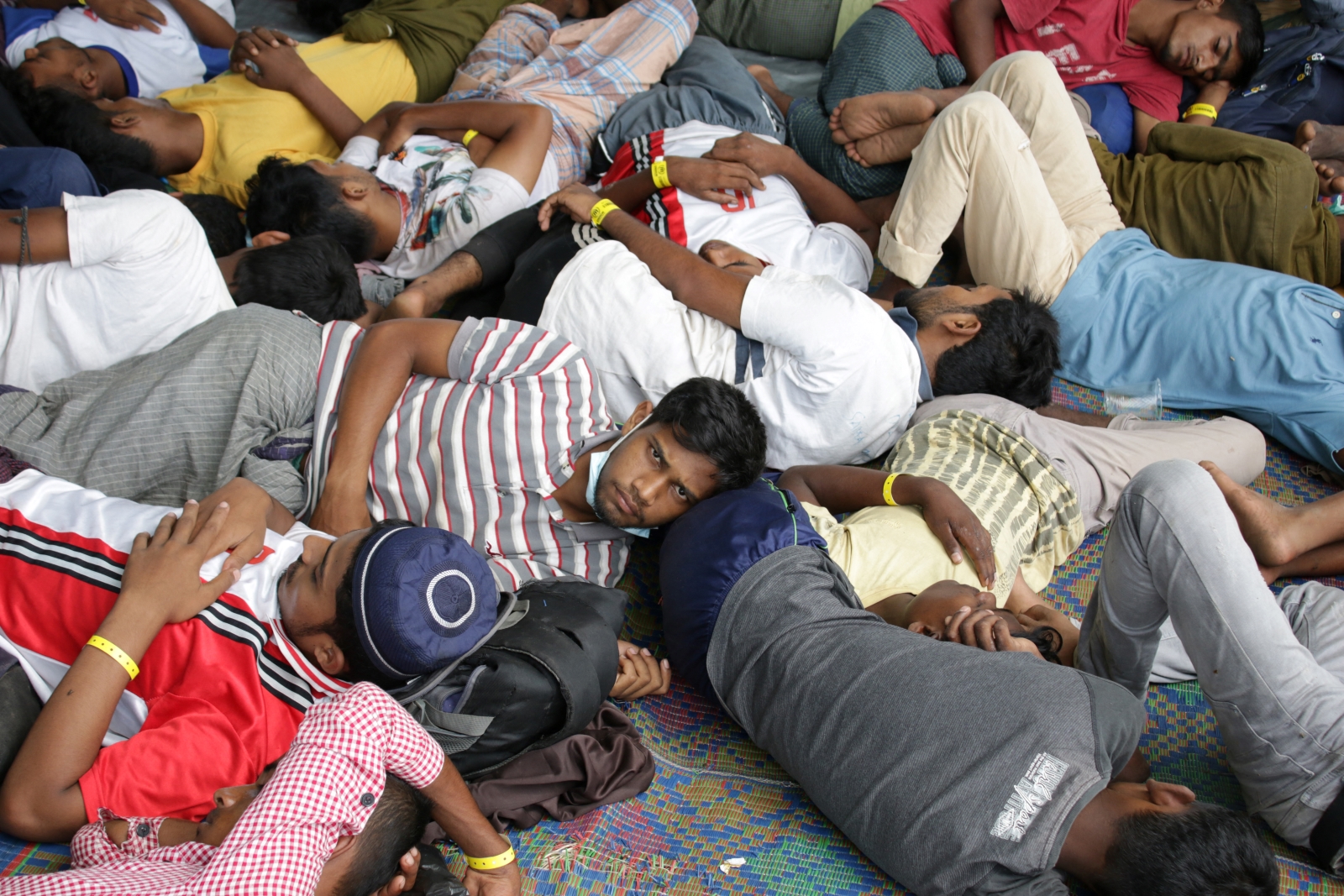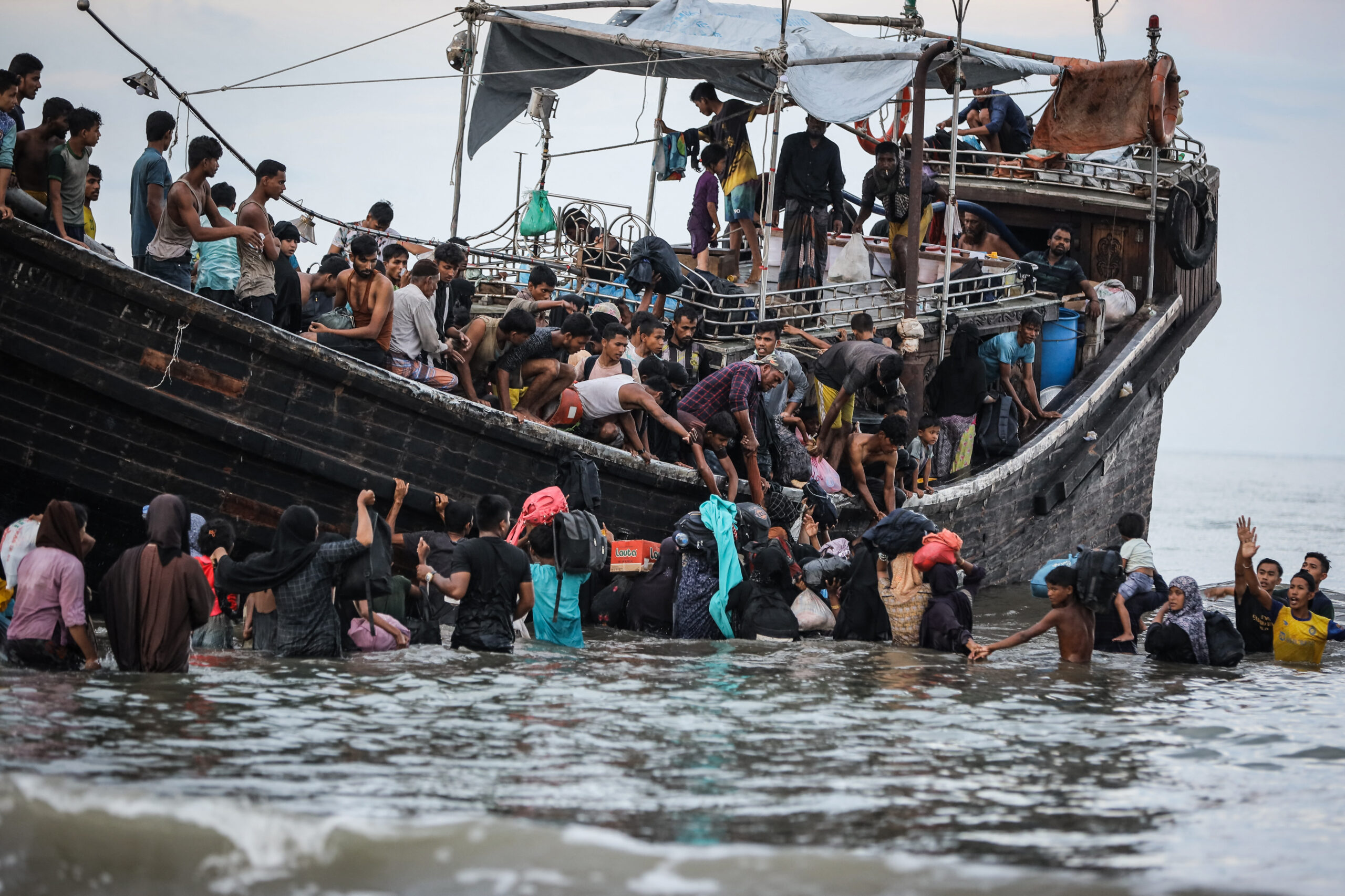Some fear Laos will try to normalise the junta or serve Chinese interests, but while past behaviour shows a commitment to its ASEAN neighbours, it may ultimately just go through the motions and leave the status quo unchanged.
By ALLEGRA MENDELSON | FRONTIER
On January 1, Laos took the reins from Indonesia as chair of the Association of Southeast Asian Nations. As a result, it also became responsible for steering the bloc’s approach to the region’s most pressing crisis – the conflict in Myanmar since the 2021 coup.
Despite sharing a small border with Myanmar, Laos has few ties with the country. But as a one-party, authoritarian state, some fear that it will side with the military regime in Nay Pyi Taw. Vientiane is also widely perceived as being beholden to its superpower neighbour and largest creditor, China, which has maintained formal relations with Myanmar’s junta in contrast to ASEAN, which continues to exclude top junta leaders from regional meetings.
However, diplomats and ASEAN analysts interviewed by Frontier point to Laos’s previous chairmanship as proof that it’s not merely Beijing’s puppet. Vientiane takes its role in ASEAN seriously, they say, and so would be reluctant to undermine the Five Point Consensus. This agreement, reached between members of the bloc and the junta in April 2021, sets certain conditions, such as an end to the violence and dialogue between all parties, before the regime can be brought in from the cold.
Nonetheless, with its limited resources and pressing problems of its own, it’s unclear if Laos has the will or capacity to make a breakthrough where previous chairs have failed. It has also appeared to show little interest in an initiative started by Jakarta, before it handed over the chairmanship, to ensure continuity and pool resources through a “troika” partnership between Laos, Indonesia and Malaysia as the current, preceding and future chairs. This has led some to conclude that Vientiane will quietly go through the motions without taking any risks, before passing the buck to Kuala Lumpur and leaving Myanmar’s crisis unresolved.
No babysitting
Laos’s first step on Myanmar was to appoint a special envoy to address the crisis, as required by the Five Point Consensus. Due to inter-bloc disagreements over a more permanent arrangement, the position has rotated with the chairmanship. Brunei put forward its second foreign minister for the job in 2021, followed by Cambodia’s foreign minister. Indonesia tried to strengthen the role when it took over, by creating an office of the special envoy based in Jakarta. For its turn, Laos chose seasoned diplomat and Vice Minister of Foreign Affairs Mr Alounkeo Kittikhoun.
Less than two weeks in, Alounkeo travelled to Myanmar to meet with junta chief Senior General Min Aung Hlaing, the regime’s foreign minister U Than Swe and its home affairs minister Lieutenant-General Yar Pyae. He also met with seven of the ethnic armed organisations that signed the Nationwide Ceasefire Agreement before the coup and nearly 40 political parties that are registered with the junta-appointed election commission.

Alounkeo has also met with diplomats from its “troika” partners, said Mr Ngurah Swajaya, the head of Indonesia’s office of the special envoy. “Whenever the special envoy has an engagement with stakeholders, he will sit down and inform the ambassadors of Indonesia and Malaysia in Vientiane about what is happening and ask advice,” said Ngurah, adding that Alounkeo also briefed them on returning from his trip to Myanmar in January.
The Indonesian and Malaysian embassies in Laos did not respond to requests for comment on these meetings.
Ngurah claims he has had many “open and transparent conversations” with Alounkeo, including about humanitarian aid and dialogue among stakeholders. Although Ngurah became Indonesia’s ambassador to Switzerland in October last year, he says he still leads the Indonesian office of the special envoy remotely and regularly meets with people from different sides of Myanmar’s conflict.
But a senior analyst of ASEAN affairs said Vientiane was keeping Jakarta and Kuala Lumpur at arms’ length. “It sounds as though Laos is not particularly interested in activating the troika. It’s going to consult the other two members but it’s not really going to take full advantage of the troika and it doesn’t sound like they are going to make missions to Myanmar or to meet with the NUG in groups of three,” said the analyst on condition of anonymity, referring to the opposition National Unity Government, established by lawmakers deposed in the coup.
He added that Indonesia was conscious of this danger when it conceived of the troika, with foreign minister Retno Marsudi even pushing for it to be called the informal consultative mechanism instead.
“She was aware that it wouldn’t fly if it looked like Indonesia was basically saying that Laos can’t handle this so we’re going to do it as a team, but as you know everyone ended up calling it the troika anyways and that was the message that was received. So Laos wants to demonstrate that it does not need Indonesia’s help and that it does not need to be babysat by Indonesia to handle this issue.”
Laos’s ASEAN department did not respond to Frontier’s numerous requests for comment.
The dragon’s shadow
In its first two months, Laos has practised a particularly quiet form of diplomacy on Myanmar, so far opting not to publish statements or speak to the media. While Jakarta played it similarly close to the chest during the beginning of its chairmanship, it gradually became more transparent, including about its engagements with the NUG.
Accounts of Alounkeo’s trip to Nay Pyi Taw in January came from Myanmar state media instead, and it’s unclear whether he has met with any members of the resistance.
Laos’s secretive approach has fuelled fears that it could be pushing the interests of its dominant northern neighbour, China, from behind closed doors. These interests include a Beijing-led regional crackdown on cyber scam centres in Myanmar, Cambodia and Laos, which often target Chinese victims and recruit trafficked Chinese workers, as well as substantial investments and infrastructure projects within Myanmar. These stakes have recently prompted Beijing to take a tougher line with the junta, though it continues to engage it as a partner in securing its objectives.
Along with close political ties and a 500-kilometre shared border, China is also Laos’s largest creditor. About half of Laos’s debt – which totals 125 percent of the country’s GDP – is owed to China, which has funded several giant infrastructure projects, including hydropower dams and a high speed railway connecting the Chinese city of Kunming with Vientiane.
However, during Laos’s previous chairmanship in 2016, the country surprised sceptics by standing up to Beijing in support of its fellow ASEAN members amid the dispute over who controls the waters of the South China Sea. A few days after an international tribunal ruled in favour of claims made by the Philippines, Laos negotiated a joint communique that many saw as more balanced than expected.
“They [sceptics] basically thought that Laos wouldn’t be able to resist Chinese pressure but by all appearances they did,” said the ASEAN analyst.
He added that Vientiane’s desire for an honoured place within ASEAN means it’s unlikely to sabotage the bloc’s broader attempts to bring Myanmar’s junta to the negotiating table, even if it were being pressured by Beijing to pursue a different goal. “They want to show that they are good chairs and that they have good offices for the other member states and that they can facilitate consensus. If they’re not seen as acting in the service of consensus, then other ASEAN states get very frustrated and that has broader and longer term costs,” he explained.
The analyst pointed to Cambodia’s chairmanship in 2022. Also an authoritarian, single-party state, many expected Cambodia to collude with the junta and initially it seemed to do so. But then-Prime Minister Hun Sen quickly chose a different path, regularly expressing frustration and at times even openly pushing back against the junta.
One cause for concern, however, was Laos’s hosting of a so-called Track 1.5 meeting on Myanmar in September, a few months before becoming chair. Informal meetings of this type have been held since late 2022 in parallel with the official ASEAN process. They have involved representatives of Myanmar’s neighbours from both inside and outside the bloc, including China, India and Bangladesh, as well as junta representatives and a small number of non-government organisations. The inclusion of the junta’s foreign minister on multiple occasions, however, has stoked alarm that the meetings were undermining ASEAN policy and reintegrating the regime via a backdoor.
However, the key driver of the initiative was the former Thai government, which left office in August last year. The ASEAN analyst said the Track 1.5 meetings were “not dead entirely” and there are still “people who attended who feel that they’re useful and want to organise more”, but there have been no reported engagements since September.
The conservative path
Laos may have other reasons for putting a positive spin on its chairmanship. The country has declared 2024 the “Visit Laos Year” to boost tourism, following years of bad press related to economic strife and a range of human rights abuses from media censorship to the jailing and kidnapping of dissidents.
Dr Kearrin Sims, a development scholar focussed on Laos at James Cook University in Australia, said Laos likely wants to use its chairmanship of ASEAN to change the narrative.
“The level of foreign debt and the kind of economic mismanagement associated with human rights abuses that have taken place over the last year have garnered a lot of international attention. So the government likely sees [its chairmanship] as a year of opportunity to position Laos in a more positive light by having some successful outcomes for ASEAN,” he said.
Laos could already point to one apparent, if minor, victory from its chairmanship. At the Foreign Ministers’ Retreat in the old Laos royal capital of Luang Prabang on January 29, the junta sent a “non-political” representative for the first time since ASEAN blocked senior regime leaders from meetings in 2021. Instead of leaving the seat empty as it did in the past, the junta sent a permanent secretary from its Ministry of Foreign Affairs.
This capitulation could be evidence of the junta’s recent struggles as it loses territory and soldiers to enemy groups. In October, the Three Brotherhood Alliance of ethnic armed organisations launched an offensive in northern Shan State and seized numerous towns and border crossings with China. More recently, the regime has seen towns fall in Rakhine State.
“The junta is in a much weaker position than when the offer was first made in 2021. They’ve just suffered really humiliating battlefield defeats and haven’t made any progress in terms of international recognition; they’ve only gone backwards,” said the ASEAN analyst.
Ms Joanne Lin, an ASEAN researcher at the ISEAS Yusof-Ishak Institute in Singapore, suspects that as a concession granted at the start of Laos’s chairmanship, the junta’s decision to send the foreign affairs official was partly a gesture of friendship to Vientiane, which the junta likely sees as a potential ally in an overall hostile international environment.
“Laos is not a country that is on a different side from Myanmar, it’s not a country that has been trying to impose harsher measures on Myanmar. It’s always been a country that advocates that Myanmar should come back and have a seat at the political level,” she said, referring to Laos’s reported conduct in previous closed-door meetings, when it has joined the ASEAN faction that has argued against isolating and punishing the junta.
There’s a risk that Vientiane could reciprocate the junta’s offer of friendship and try to engineer the normalisation of the regime. But Lin predicted that, ultimately, Laos will play it safe and not try to tip the balance – either towards normalising the regime, or punishing it and embracing the resistance.
“They’re going to be engaging but they are not going to make it a grand affair or come up with anything that is beyond what Indonesia has done,” said Lin. “Laos is definitely going to carry on with the Five Point Consensus and the good thing with the [consensus] is that it’s already in place so Laos doesn’t have to come up with anything new.”
Rather than achieving a breakthrough, she said Vientiane was content to get through the year without a scandal, or having its limited resources sucked into the Myanmar crisis.
“What they essentially want to do is get over this chairmanship without causing too many issues or being too ambitious and creating new situations that they have to deal with,” she said. “They will go on the conservative path, and do whatever they need to do to fulfil their commitment as chair.”







